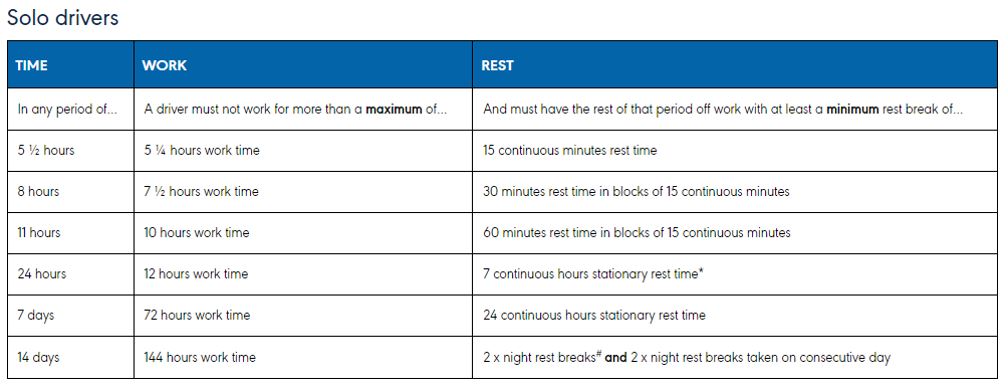
Fatigue Management Best Practices For Australian Heavy Vehicle Operators
With driver fatigue accounting for 34.8% of fatal truck crashes in Australia, the management of tired driving is a critical issue for Australia’s heavy vehicle transport industry. Companies and drivers have a duty to implement comprehensive fatigue prevention strategies and strict work scheduling practices in line with the national legislation. This article outlines key best practices for heavy vehicle drivers to manage fatigue risks on Australian roads:
Schedule Realistic Trips
The first step for optimal fatigue management is planning driving schedules that are realistic and achievable within regulated work hours. Companies must assess each journey, taking into account distances, speed limits, road conditions, number of breaks required and contingencies for delays. Schedules should allow the full trip to be completed safely without exceeding driving hour limits or forcing the driver to compromise minimum rest times.
Monitor Driving Hours
Operators must diligently monitor driving hours using paper work diaries or electronic work diary systems. The maximum of 12 hours work time with up to 10 hours driving must be observed. Strict records make it easy to ensure compliance and avoid driving fatigued. Technology like telematics and GPS can automate accurate monitoring and reporting.
Enforce Adequate Breaks
Scheduling adequate breaks for food, rest and sleep is imperative. The National Heavy Vehicle Regulator provides a handy guide for standard rest times for drivers who don’t have fatigue management accreditation shown in the table below. Consider requiring drivers to take more frequent and longer breaks than the legal minimums when possible.

Provide Proper Rest Facilities
Companies must provide facilities that enable drivers to obtain quality rest during break times. This means clean, quiet, comfortable places to sleep and eat with bathroom access. Austroads provides a free set of guidelines for the provision of heavy vehicle rest areas which you can find here.
Assess Driver Fitness
Drivers should undergo regular medical checkups to screen for sleep disorders and other conditions that may impair alertness. Any health or personal issues that could affect driver fitness should also be addressed.
Implement Fatigue Training
Comprehensive driver education on recognising and preventing fatigue is vital. Training should cover fatigue causes and effects, managing sleep to avoid driving while drowsy, trip planning, reporting procedures and personal accountability.
Promote Responsible Scheduling
Customers, loading depots and others must cooperate in responsible scheduling. Transport operators should communicate work hour limits and minimum turnaround times required between trips. Refuse unreasonable delivery demands that cannot be accomplished within legal work hours.
Leverage Technology
Use technologies to support fatigue management like telematics, scheduling software, collision avoidance systems and driver fatigue monitoring systems. In-vehicle camera systems can identify both physiological indicators such as blinking and yawning – and dangerous driving behaviours that are indicative of a fatigued driver to provide in-cab alerts which advise the driver to rest.
By making fatigue prevention an operational priority heavy vehicle companies can significantly mitigate the safety risks of long distance driving on Australian roads.
Get in touch with us today to learn more about how our Telematics solutions can play an important role in your driver fatigue management plans.
